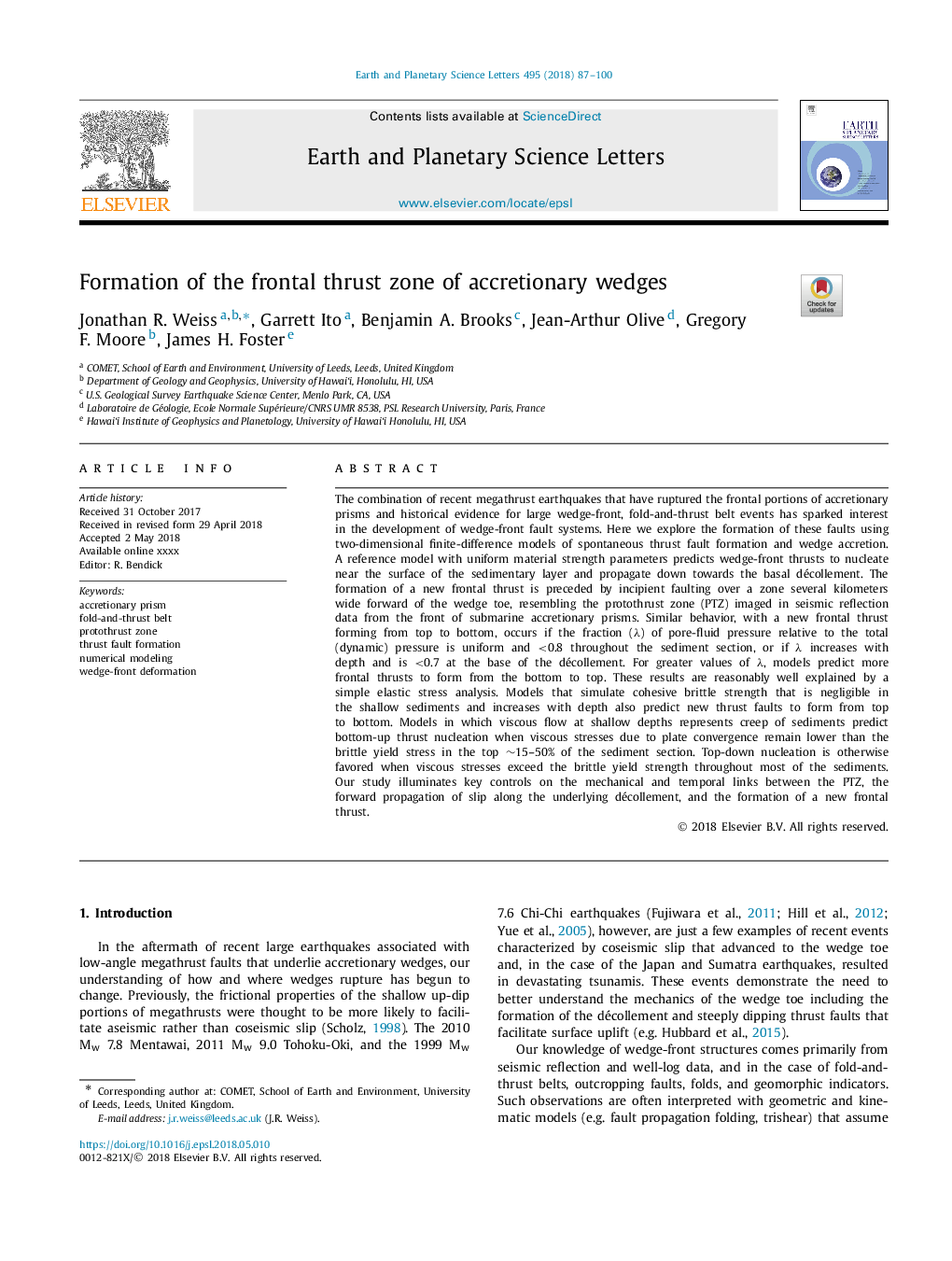| کد مقاله | کد نشریه | سال انتشار | مقاله انگلیسی | نسخه تمام متن |
|---|---|---|---|---|
| 8906801 | 1634661 | 2018 | 14 صفحه PDF | دانلود رایگان |
عنوان انگلیسی مقاله ISI
Formation of the frontal thrust zone of accretionary wedges
ترجمه فارسی عنوان
شکل گیری ناحیه محوری جلویی گوه های ارتجاعی
دانلود مقاله + سفارش ترجمه
دانلود مقاله ISI انگلیسی
رایگان برای ایرانیان
کلمات کلیدی
منشور تصادفی، تسمه و تسمه منطقه پروتوتورست، تشکیل خطای محرک، مدلسازی عددی، تغییر شکل در جلوی جبهه،
موضوعات مرتبط
مهندسی و علوم پایه
علوم زمین و سیارات
علوم زمین و سیاره ای (عمومی)
چکیده انگلیسی
The combination of recent megathrust earthquakes that have ruptured the frontal portions of accretionary prisms and historical evidence for large wedge-front, fold-and-thrust belt events has sparked interest in the development of wedge-front fault systems. Here we explore the formation of these faults using two-dimensional finite-difference models of spontaneous thrust fault formation and wedge accretion. A reference model with uniform material strength parameters predicts wedge-front thrusts to nucleate near the surface of the sedimentary layer and propagate down towards the basal décollement. The formation of a new frontal thrust is preceded by incipient faulting over a zone several kilometers wide forward of the wedge toe, resembling the protothrust zone (PTZ) imaged in seismic reflection data from the front of submarine accretionary prisms. Similar behavior, with a new frontal thrust forming from top to bottom, occurs if the fraction (λ) of pore-fluid pressure relative to the total (dynamic) pressure is uniform and <0.8 throughout the sediment section, or if λ increases with depth and is <0.7 at the base of the décollement. For greater values of λ, models predict more frontal thrusts to form from the bottom to top. These results are reasonably well explained by a simple elastic stress analysis. Models that simulate cohesive brittle strength that is negligible in the shallow sediments and increases with depth also predict new thrust faults to form from top to bottom. Models in which viscous flow at shallow depths represents creep of sediments predict bottom-up thrust nucleation when viscous stresses due to plate convergence remain lower than the brittle yield stress in the top â¼15-50% of the sediment section. Top-down nucleation is otherwise favored when viscous stresses exceed the brittle yield strength throughout most of the sediments. Our study illuminates key controls on the mechanical and temporal links between the PTZ, the forward propagation of slip along the underlying décollement, and the formation of a new frontal thrust.
ناشر
Database: Elsevier - ScienceDirect (ساینس دایرکت)
Journal: Earth and Planetary Science Letters - Volume 495, 1 August 2018, Pages 87-100
Journal: Earth and Planetary Science Letters - Volume 495, 1 August 2018, Pages 87-100
نویسندگان
Jonathan R. Weiss, Garrett Ito, Benjamin A. Brooks, Jean-Arthur Olive, Gregory F. Moore, James H. Foster,
